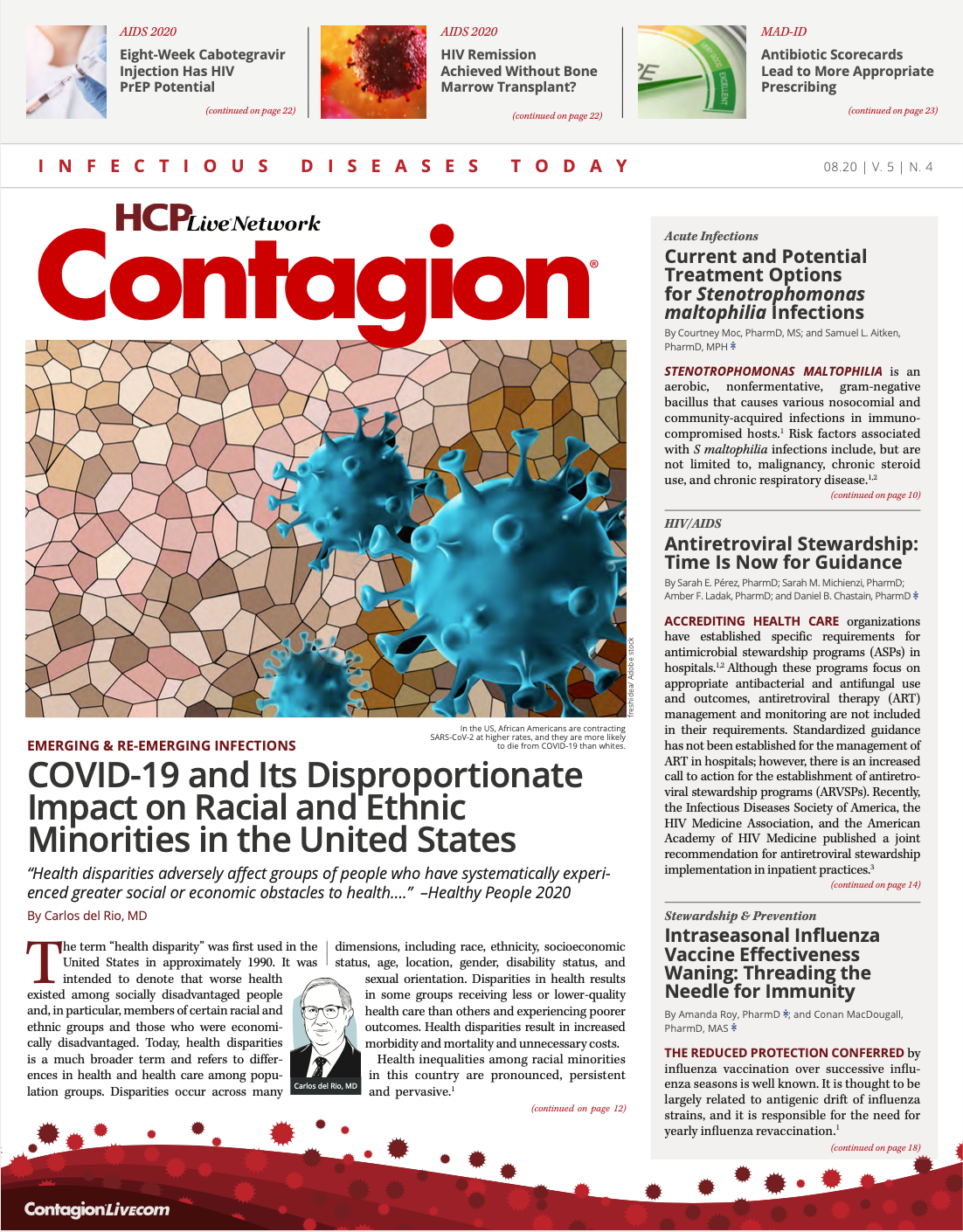Accelerating Antimicrobial Stewardship Interventions Using the PhenoTest System for Gram-Negative Bacteremia: Data on Real-World Use
Rapid diagnostic technologies (RDTs) have revolutionized how cultures are processed. Whereas Gram staining and organism identification traditionally took hours, RDTs reduce that time to minutes. Next-generation RDTs combine genetic markers for resistance, predicting whether organisms harbor common resistance mechanisms.
Implications for patient care are numerous. One infectious diseases tenet is getting the patient on the correct antibiotic as soon as serious infection is suspected. Variables such as resistance risk factors, empiric broad agents, and quickly narrowing agents are important. Using broad or ultra-broad empiric coverage depends on local ecology. However, getting that balance wrong can spell disaster for patient outcomes or for future antibiograms.
The Accelerate PhenoTest is a unique RDT providing minimum inhibitory concentrations for 5 Gram-positive, 7 Gram-negative, and 2 Candida organisms within 7 hours of positive blood culture. Banerjee and colleagues provide the first prospective in vivo study comparing traditional microorganism identification, susceptibility, and antimicrobial stewardship (AS) intervention with PhenoTest identification, susceptibility, and AS intervention in patients with pure Gram-negative bacilli (GNB) bacteremia during a 1-year time period. Patients were included at 2 sites if blood cultures showed GNB during routine laboratory hours. All patients had standard identification (using MALDI-TOF MS) and susceptibility (via broth microdilution or agar dilution) performed. The study group also utilized PhenoTest. Both groups had AS prospective audit and feedback performed. Additionally, every positive Gram stain, organism identification, and susceptibility result was paged to the AS team, members of which were was not blinded to use of PhenoTest. The primary outcome was median hours from randomization until first antibiotic modification within 72 hours of randomization. Secondary outcomes included in-hospital mortality, length of hospital stay, intensive care unit (ICU) length of stay, time to antibiotic escalation and de-escalation within 72 hours, hospital-onset Clostridioides difficile, acquisition of new hospital-acquired resistant organisms/infection, and concordance of organism identification and susceptibility using both testing methods.
Overall, 497 patients were included, with 448 in the modified intention-to-treat population. The groups were comparable at baseline: mostly white males, with a mean age of 62 years (PhenoTest) and 65 years (comparator). Common comorbidities included diabetes, renal disease, cancer history, and congestive heart failure. The mean Pitt bacteremia score was 2, and most patients were admitted to floors. The most common GNB identified among the standard-of-care and PhenoTest groups included E. coli (44% and 42%, respectively), Klebsiella (20% and 21%), and Pseudomonas (10% and 12%). Multidrug resistance was identified in <25% of isolates.
Results are presented in the Table. Overall, the PhenoTest group had a quicker time to first antibiotic modification by 6.3 hours. This was significant in patients with Pitt bacteremia scores ≥2, but not in patients in the ICU or who were neutropenic at randomization. There were no differences in most secondary end points. PhenoTest did aid in antibiotic optimization: In patients with resistant organisms, time to escalation was quicker by 43.3 hours, and in patients with susceptible organisms, time to de-escalation was also quicker by 13.0 hours.
PhenoTest provides susceptibility information for 7 Gram-negative organisms and 12 antibiotics. A total of 90% of organisms were identified via PhenoTest, and the rest via routine methods. Of the PhenoTest-identified organisms, there was agreement among 88% of them (meaning the PhenoTest and standard susceptibility results matched).
This is the first study to report on real-world use of the PhenoTest system. It performed very well compared with traditional identification and susceptibility modalities. Several important AS principles were achieved, such as faster escalation in resistant organisms and faster de-escalation in susceptible organisms. However, end points that the C-suite may be more interested in, such as mortality or length of stay, did not differ. Cost-effectiveness was also not evaluated.
Several details must be evaluated before applying these results to other institutions. Differences such as lack of MALDI-TOF MS use, patient population, resistance prevalence, and microbiology and AS staffing hours may alter the results. If the most common organisms are not included on the PhenoTest panel, it may not be an appropriate RDT selection. Empiric antibiotic choices may also contribute. Cefepime and piperacillin/tazobactam were most frequently used in this study. If local institutions use broader agents but have more susceptible organisms, the opportunity for de-escalation is greater. Conversely, if institutions use narrower agents but have more resistant organisms, the opportunity for escalation is greater, as is the impact on mortality, potentially.
A second similar study was also published, further strengthening real-world data:
Dare RK, Lusardi K, Pearson C, et al. Clinical impact of Accelerate Pheno rapid blood culture detection system in bacteremic patients. Clin Infect Dis. Published online May 28, 2020. doi:10.1093/cid/ciaa649
Table. Primary and Secondary Outcomes of Standard of Care (SOC) vs PhenoTest
Variable
SOC
(n = 226)
PhenoTest
(n = 222)
Difference
P value
Time to first antibiotic modification (hours)
14.9
8.6
6.3
.02
Pitt bacteremia score ≥2 (hours)
15.7
7.6
8.1
.02
Pitt bacteremia score <2 (hours)
14.4
9.3
5.1
.50
ICU at randomization (hours)
11.8
8.0
3.8
.13
Neutropenic at randomization (hours)
20.8
9.5
11.3
.63
Antibiotic escalation, resistant organisms (hours)
61.7
18.4
43.3
.01
Antibiotic de-escalation, susceptible organisms (hours)
42.4
29.4
13.0
.02
30-day in-hospital mortality
18 (8%)
25 (11%)
-
.27
Hospital LOS (days)
8.2
9.8
-
.09
30-day readmission
47 (21%)
45 (20%)
-
.48
Hospital-onset C. difficile
5 (2%)
6 (3%)
-
.77
MDRO acquisition
23 (10%)
23 (10%)
-
1.0
ICU, intensive care unit; LOS, length of stay; MDRO, multidrug-resistant organism.

